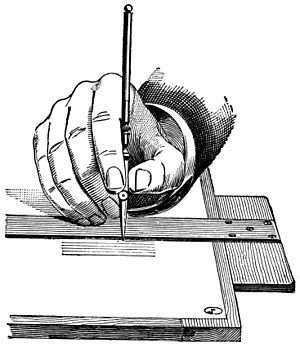Drawing Instruments: Difference between revisions
From DT Online
mNo edit summary |
mNo edit summary |
||
| Line 1: | Line 1: | ||
[[File:Holding-a-ruling-pen.jpg|300px|right]] | [[File:Holding-a-ruling-pen.jpg|300px|right]] | ||
Drawing, in its various forms, is the most common way of communicating ideas in '''[[Design and Technology]]'''. Free-hand [https://en.wikipedia.org/wiki/Sketch_%28drawing%29 '''Sketching'''] helps the designer to work out initial ideas and to share them with others. '''Sketches''' can be in '''[[Perspective]]''' or follow one of the more formal [https://en.wikipedia.org/wiki/Technical_drawing '''Technical Drawing'''] | Drawing, in its various forms, is the most common way of communicating ideas in '''[[Design and Technology]]'''. Free-hand [https://en.wikipedia.org/wiki/Sketch_%28drawing%29 '''Sketching'''] helps the designer to work out initial ideas and to share them with others. '''Sketches''' can be in '''[[Perspective]]''' or follow one of the more formal [https://en.wikipedia.org/wiki/Technical_drawing '''Technical Drawing'''] conventions such as '''[[Isometric]]''', '''[[Oblique]]''' or '''[[Orthographic]]'''. | ||
Revision as of 07:52, 24 July 2015
Drawing, in its various forms, is the most common way of communicating ideas in Design and Technology. Free-hand Sketching helps the designer to work out initial ideas and to share them with others. Sketches can be in Perspective or follow one of the more formal Technical Drawing conventions such as Isometric, Oblique or Orthographic.
Sketching is a very quick and free way of working out ideas and all those involved in Design and Technology are encouraged to develop this skill - it only takes practice!
Use of rulers and compasses can help by providing a guide lines for example, but when a design is finalised and a drawing has to be produced which can be measured off, Drawing Instruments are used to create detailed Working Drawings or Plans.
Modern industrial practice has largely replaced the production of Technical Drawings by Draughtsmen working at a drawing board with Computer Aided Design (CAD) but this is still based on Technical Drawing techniques and conventions.
